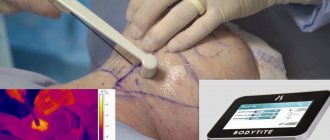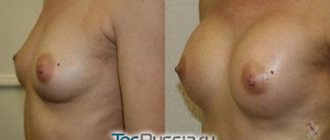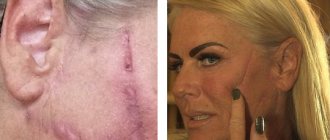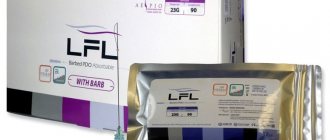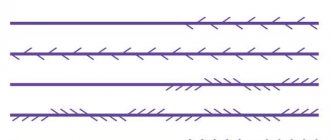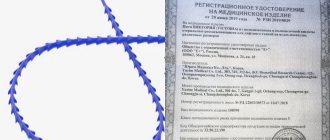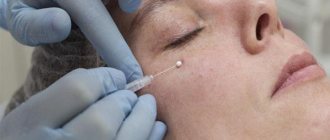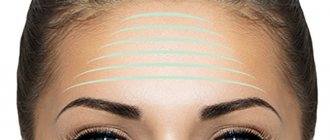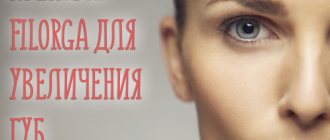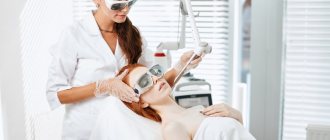Threadlifting is the last word in cosmetology. Thanks to a facelift using mesothreads, you can achieve a significant correction of the oval and get rid of wrinkles. However, it is also used on other parts of the body. This lifting was invented in Korea, but today it is at the peak of popularity all over the world.
To undergo this procedure, contact our New Skin Clinic in St. Petersburg. The non-surgical mesothread method is characterized by a number of contraindications that exist for most surgical interventions. They should be treated with extreme care, because the result depends on it - not to mention health.
Local contraindications
Cosmetologists warn of two cases when the condition of the skin in certain areas does not allow mesothreads to be applied.
- Pigment formations. It is prohibited to inject through moles. It is forbidden to injure them with a needle, because such an action can cause their further growth. This applies to all neoplasms: they can become malignant.
- Infectious and inflammatory processes. Intradermal injections into areas that have signs of a viral or bacterial skin disease can cause the spread of this infection. Before the procedure, it is important to cure the skin, completely eliminating areas of inflammation.
General contraindications
These are cases when the use of mesothreads is unacceptable not only on a specific area of the skin, but also in general.
- The period of pregnancy and breastfeeding. When a woman is carrying a child or undergoing lactation, any interventions in the body can only be carried out if necessary. Getting rid of wrinkles does not apply to such cases.
- Blood clotting disorders.
- Oncological diseases.
- Blood diseases.
- Individual intolerance.
- Minor age.
- Chronic diseases during exacerbation.
- Autoimmune diseases (the procedure can only be performed during remission, with the permission of the attending physician).
- Diabetes mellitus, belonging to type 1 or 2.
- Illness during decompensation. The body is especially sensitive to microbes, so every scratch begins to fester. Permission from an endocrinologist is required.
- It is advisable not to carry out the procedure during critical days. During menstruation, not only is the pain threshold lowered, but the risk of scarring and even hematomas is increased to the maximum.
This series coincides with the prohibitions on contour plastic surgery. Exactly one week before the scheduled procedure, you must stop taking any kind of anticoagulants, if any. In addition, the drug acetylsalicylic acid should be excluded.
Prohibitions after the procedure
At the end of the procedure, the following rules must be strictly followed.
- For 21 days after installing the threads, you cannot visit baths, saunas, take hot baths, or be in a solarium. In general, exposure to high temperatures should be avoided.
- You must not drink alcoholic beverages for a week.
- It is forbidden to do facial massage for two months.
Don’t worry if you are in a “risk group”, because not all contraindications completely exclude the possibility of lifting with mesothreads. There are also rare diseases that are not mentioned above, but they are contraindications. In any case, a doctor’s consultation is necessary - contact the cosmetologists of New Skin Clinic.
Author of the article: Stronskaya Oksana Alekseevna Chief physician, cosmetologist, dermatovenerologist, laser therapist
Mesothreads - a new word in fabric reinforcement
Thread methods for correcting involutional changes in the face and body have been used in surgical practice for a long time. Surgical threads are fixed to the periosteum or ligaments, which provides the lifting effect. They are installed through a skin incision in an operating room followed by a rehabilitation period. At the end of 2012, mesothreads appeared, the installation of which is carried out in a treatment room by cosmetologists without skin incisions and often without a rehabilitation period. The method is low-traumatic, well tolerated by patients under topical anesthesia and, thanks to this, is now widely used. Mesothreads are absorbable polydioxanone suture material connected to a guide needle. This material has long been used in medicine and tissue reactions to it have been well studied. The tissue half-life of polydioxanone is approximately 240 days. A new technology for non-surgical face lift using polydioxanone threads is called threadlifting. Most mesothreads are produced in South Korea.
Like any new technique, 3D mesothreads have gone through a standard path. At first there was admiration, as hopes were pinned on them for the limitless possibilities of non-surgical skin tightening promised by advertising. The method began to be used by many cosmetologists without special training and often without higher medical education. Then disappointment set in, as the results did not always meet expectations, and the first complications appeared. Currently, mesothreads have occupied their specific niche along with such methods as biorevitalization, contour plastic surgery and botulinum therapy, which have long been considered classics of modern cosmetology.
Threadlifting is recommended for patients with the initial stages of gravitational ptosis if minor movement of soft tissues in the facial area is necessary. In case of severe soft tissue ptosis, preference should be given to other methods of correcting involutional changes. It is necessary to understand that mesothreads are not a substitute for surgery, and the effect of their introduction can last up to 1.5 - 2 years. Good results have been obtained in the correction of wrinkles in the area between the eyebrows and forehead in patients resistant to Botox and Dysport. When rejuvenating the neck and décolleté, the use of 3 D mesothreads can significantly reduce skin atony in these areas. Skin thickening occurs gradually, increasing over 1-2 months. Using mesothreads you can improve the area above the upper lip, as well as shape the lip contour. The use of various techniques for installing mesothreads allows you to solve various problems. Recently, options for mesothreads with notches and springs have appeared, the installation of which leads to a “three-dimensional” lifting of soft tissues.
Before the threadlifting procedure, the cosmetologist talks in detail about the possibilities of the method, identifies contraindications and points out possible limitations after the procedure. Then the patient signs informed consent. A cosmetologist's arsenal includes mesothreads of various lengths. Depending on the thickness of the skin and the area of application, the doctor selects mesothreads of the required size. The price of mesothread does not depend on its length. The cost of the procedure is affected only by the number and type of threads used: linear, spiral or needle.
FAQ
1. What manufacturers of mesothreads do the doctors at your center use in their work?
In our medical center, doctors use only mesothreads that have a registration certificate for medical devices and are approved for use in the Russian Federation. These are Lead Fine Lift mesothreads (South Korea) and Beaute' lift V Line (South Korea). We do not use threads from other manufacturers.
2. Mesothread complications. Recently, there have been negative reviews from patients who experienced complications after the thread lifting procedure. How often do complications occur and how can they be avoided?
The most common are hematomas or bruises after the procedure, which can be avoided by using adequate hemostatic therapy during the procedure if a vessel enters the vessel. Patients should remember that the risk of hematomas increases when undergoing a thread lifting procedure during the first days of the menstrual cycle, when drinking alcohol the day before, even a glass of red wine, or taking blood thinning drugs, for example, citramone or aspirin. Carrying out the procedure in a clinical setting in compliance with the rules of asepsis and antisepsis virtually eliminates the development of inflammatory reactions. There is another group of complications associated with improper installation technique of mesothreads. Superficial introduction of mesothreads, incorrect choice of mesothread size relative to the anatomical zone, work in a facially active zone can lead to the appearance of tuberosity in the correction zone, so patients should carefully consider the choice of a doctor and clinic.
3. How painful and traumatic is the procedure? How long will you have to spend at home?
When reinforcing with mesothreads, there is usually no rehabilitation period. The procedure is no more traumatic than any other injection procedure. Application anesthesia is quite sufficient for the procedure.
4. How many threads do you need to use to achieve an aesthetic result?
The exact number of mesothreads required to correct aesthetic defects can only be determined during a consultation after an examination. This depends on the initial condition of the patient’s skin and the correction area. When reinforcing the cheek area, 20-30 linear threads are installed on one side. A more pronounced lifting effect in the middle third of the face is achieved by using spiral or needle mesothreads in the amount of 3-6 per side. The “double chin” area requires the installation of 10-15 mesothreads, and for the neck or décolleté area the required number of mesothreads can vary greatly.
5. After what time can additional threads be inserted to obtain a more pronounced lifting effect in the facial area?
The doctor determines the time for the repeated procedure individually depending on the initial condition of the patient’s skin.
6. Does the price of the procedure depend on the size of the mesothreads?
The length of the thread does not affect the cost of the procedure; the price consists of the number and type of threads.
7. To correct nasolabial folds, I have always used a gel based on hyaluronic acid, but recently I read positive reviews about the correction of nasolabial folds using mesothreads. Tell me which method is preferable?
Mesothreads, especially with notches, are used in the presence of a gradient fold, i.e. in case of a significant difference in the height of the cheek and upper lip area. They fix the fabric in a new position and prevent further sagging. Hyaluronic acid-based gel fills static wrinkles. Sometimes these techniques are combined to obtain a more pronounced result in the shortest possible time. Which method of correcting nasolabial folds is right for you can only be decided during a consultation after an examination, because each method, in addition to its indications, also has contraindications.
8. I can’t find reviews of patients who had mesothreads installed to lift breasts that had lost their shape after childbirth. How effective is the procedure, and how many mesothreads need to be installed?
Due to the insignificant effect, doctors at our medical center do not install mesothreads for breast lift. Thread techniques for breast lift have very limited capabilities, so it is necessary to decide on the advisability of their use at a consultation after an examination.
9. I have contraindications to Botox, I have heard good reviews about the use of mesothreads to correct wrinkles between the eyebrows. Is it so? What is the price of the procedure?
Indeed, when mesothreads are inserted into the muscle in a certain direction, it relaxes and wrinkles become less pronounced. The price of the procedure depends on the number of mesothreads.
10. A few days ago I had 40 mesothreads installed. Lumps have formed in the cheek area. How can I remove them?
Tubercles at the site of insertion of mesothreads can form if the technique of the procedure is violated, when the end of the thread is not deepened into the skin or the thread is inserted too superficially. You need to go for a consultation with the doctor who performed the procedure. If correction fails, the thread can be pryed through a small puncture and removed.
11. Are there any contraindications to the thread lifting procedure?
Standard contraindications to injection procedures are pregnancy and breastfeeding, taking blood thinning medications, inflammatory elements in the correction area, exacerbation of herpes infection, a tendency to form keloid scars, acute infectious diseases in the acute stage, and the presence of cancer.
12. What procedures can threadlifting be combined with?
Mesothreads can be combined with various cosmetic procedures, provided that the intervals between them are observed. The feasibility of such combinations is decided by a cosmetologist during a consultation strictly individually.
13. How long after installing mesothreads can vessels in the facial area be removed?
It will be possible to remove blood vessels in the facial area no earlier than 2-3 weeks after the thread lifting procedure.

